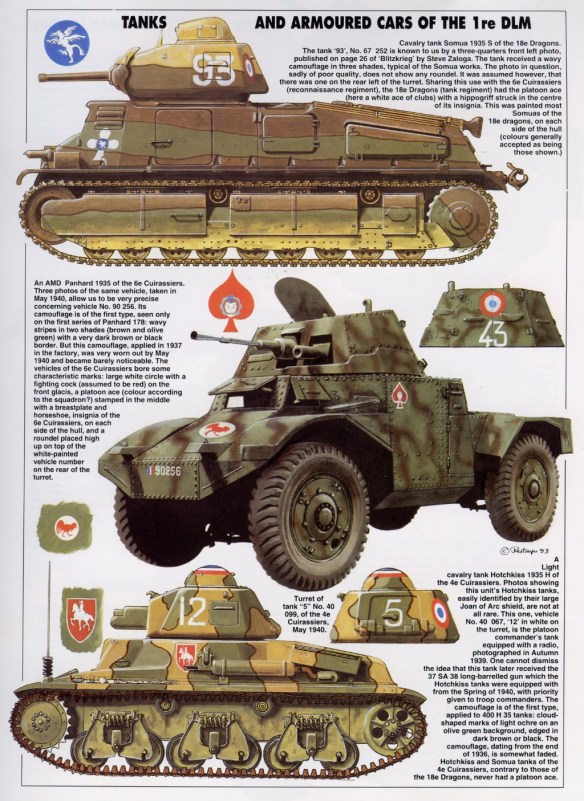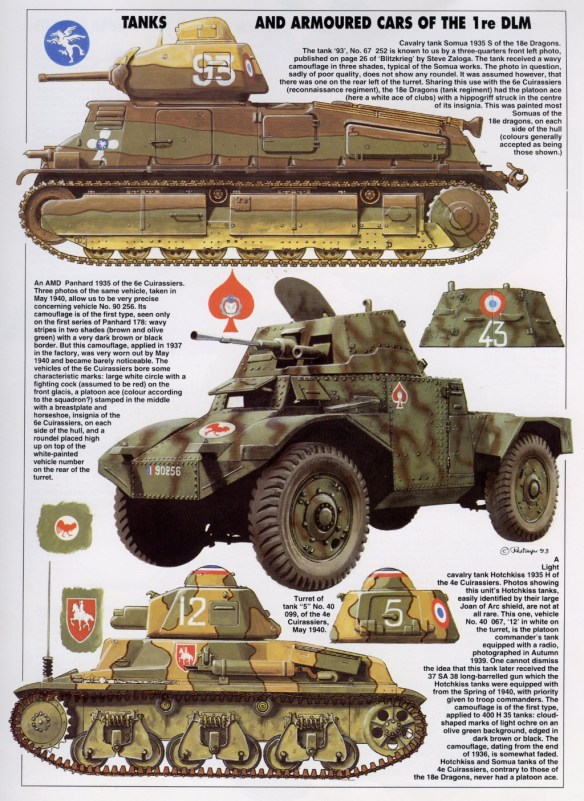
Despite Georges’s tears, the bridgeheads need not in themselves have been catastrophic. The real failure on the French side was not so much allowing the crossing to occur as being unable to mount an effective counter-attack. The French doctrine of ‘methodical battle’ proved quite inadequate to respond to the speed of warfare as the Germans were practising it.
At Sedan a counter-attack, which should have taken place on the evening of 13 May, when the German bridgehead was still extremely vulnerable, was fatally delayed until the next morning. At 7 p.m. on 13 May two infantry regiments and two battalions of light tanks had been made available to General Lafontaine of the 55DI to mount a counter-attack. Only nine hours later did he issue the order for the counter-attack to go ahead. Lafontaine, schooled in the doctrine of colmatage and the careful preparation of combined infantry and artillery response, was reluctant to send his forces in too fast. His ability to do so was compromised by faulty communications and by the difficulties of moving troops forward along roads clogged with retreating soldiers. His tanks were only able to crawl forward. The delay was disastrous. All this time the Germans were feverishly transporting tanks over the river and then moving them ahead immediately.
When the French tank finally attacked at dawn, they were initially successful until German tanks began to arrive in sufficient quantity to overwhelm them. Most of the light French tanks were destroyed. After this, the 55DI, which had already been badly mauled and demoralized on the previous day, ceased to function as a fighting force. The collapse of the 55DI had a terrible effect on the morale of its neighbouring division, the 71DI, also made up of B-Series reservists. The divisional commander of the 71DI, General Baudet, had moved his command post back and lost contact with his troops. Lacking any clear orders and demoralized by rumours about the collapse of the 55DI, many of the troops fled. By the end of 14 May the 71DI had more or less disintegrated without ever seeing action.
One remarkable feature of the battle had been the almost complete absence of the Allies in the air (apart from two bombing raids around Houx). This was due partly, of course, to their inferiority in the air, but also to the fact that they had concentrated their limited air resources in the wrong place—in central and northern Belgium. On 13 May, Air Chief Marshal Barratt, in charge of the British air force in France, had felt it necessary to rest his forces for a day after the heavy losses they had incurred in Holland and Belgium. Once the Allies had realized their mistake, they did send planes to Sedan at dawn on 14 May to attack the German bridges over the river. About 152 bombers and 250 fighters concentrated over Sedan, suffering 11 per cent losses. The small size of the target made their task difficult, and the effectiveness of the operation was reduced by sending in the planes in small groups of 10 to 20. Of 71 British bombers only 41 returned. According to the official RAF history, ‘[N]o higher rate of loss in an operation has ever been experienced by the Royal Air Force.’25 In the afternoon, for lack of any other bombers, the French were reduced to sending in obsolete Amiot 43 bombers, which were entirely unsuitable for operations of this type and also suffered heavy casualties.
On 14 May there was nothing the air force could do to retrieve the situation: all would depend on the armoured reserves. As we have seen, on 11 May Georges had begun sending forces to reinforce the Second Army, among them the 3rd DIM and 3rd DCR. Grouped together into the XXI Corps, under the command of General Flavigny, one of France’s most experienced leaders of mechanized operations, these units were dispatched on the evening of 13 May towards the left flank of the Second Army to prepare a counterattack. To the south of Sedan lies a ridge on which is situated the Mont-Dieu wood and the village of Stonne. This position was important because it controlled the route south into the centre of France. In fact, although the French did not know this, Guderian, instead of pushing forward to secure this ridge, had decided immediately to pivot two of his Panzer divisions to the west and drive them deep into French territory, leaving only the 10th Panzer Division to consolidate the position. His superior, Kleist, had initially opposed this strategy as too risky, because it exposed his flank to a counterattack from the south. Guderian’s plan offered a real opportunity for the DCR to cause the Germans difficulty.
The deployment of the 3rd DCR proved, however, very disappointing. Formed only on 20 March 1940, it had had little time to train, was short of key equipment (tracked fuel tankers, anti-tank batteries, radios) and had never yet manoeuvred as a division. Having only just arrived from Châlons, where the division had been stationed in reserve, the tanks needed to refuel. For all these reasons, the commander of the DCR, General Brocard, did not consider that he would be ready to attack before 15 May, while Flavigny wanted him to move in on the morning of 14 May. Finally they settled on the afternoon of 14 May, but further delays intervened. Flavigny was now rapidly losing confidence in Brocard’s ability to mount a rapid attack, and he decided against launching the operation on that day. Instead he ordered Brocard to disperse his tanks in ‘pockets’ along a 12-mile front west of the River Bar to Stonne. Thus, the French squandered the best chance of checking Guderian before he broke out of his bridgehead.
On the next morning (15 May), there was fierce fighting at Stonne between a company of B1 tanks from the 3rd DCR and tanks from the 10th Panzer Division. But before the French could launch a concerted counterattack, to reassemble the tanks that had been dispersed on the previous evening and refuel those that had participated in the fighting during the morning. Eventually the long-awaited counterattack fizzled out as a raid by a tank battalion in the evening while many tanks were still idling uselessly, away from the action. Further fighting took place at Stonne on 16 May and subsequent days. The French tanks performed well, and the village changed hands several times. Unfortunately, this battle had become irrelevant, since Guderian was already pushing north-westwards into France. The caution and hesitation of Flavigny and Brocard, and the impetuosity and boldness of Guderian perfectly encapsulated the difference between the French and the Germans in 1940.
